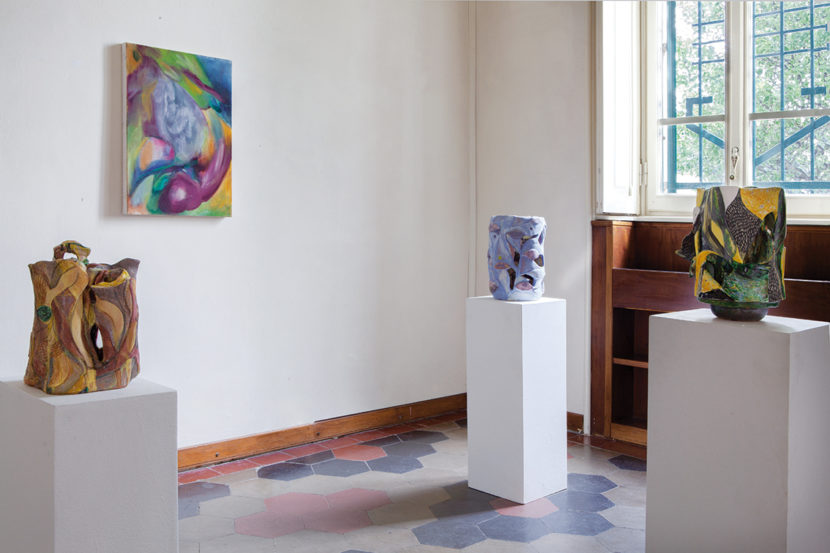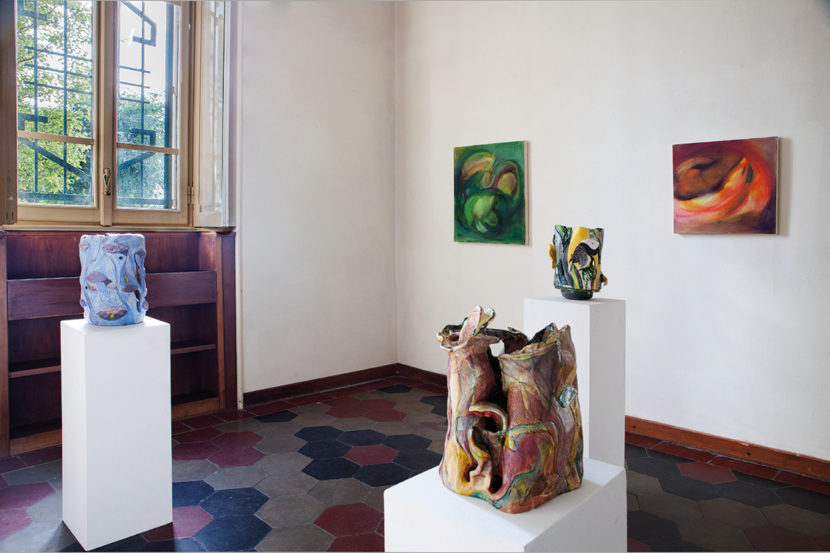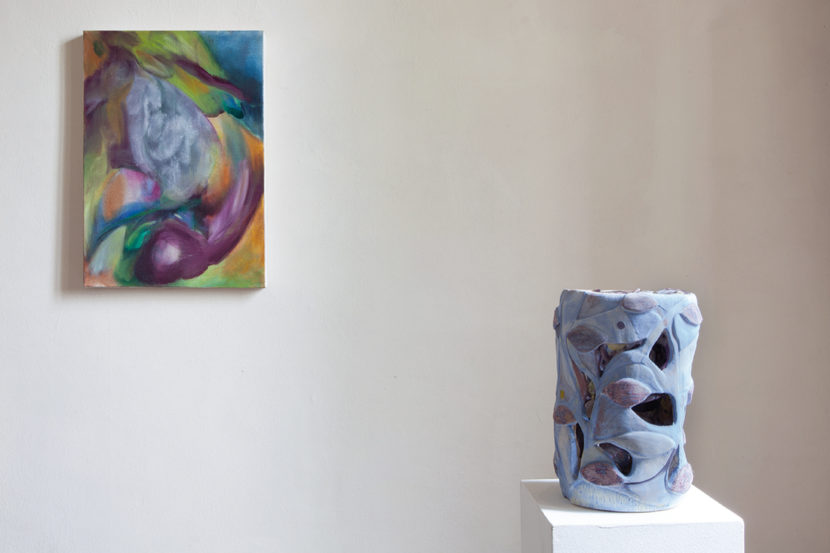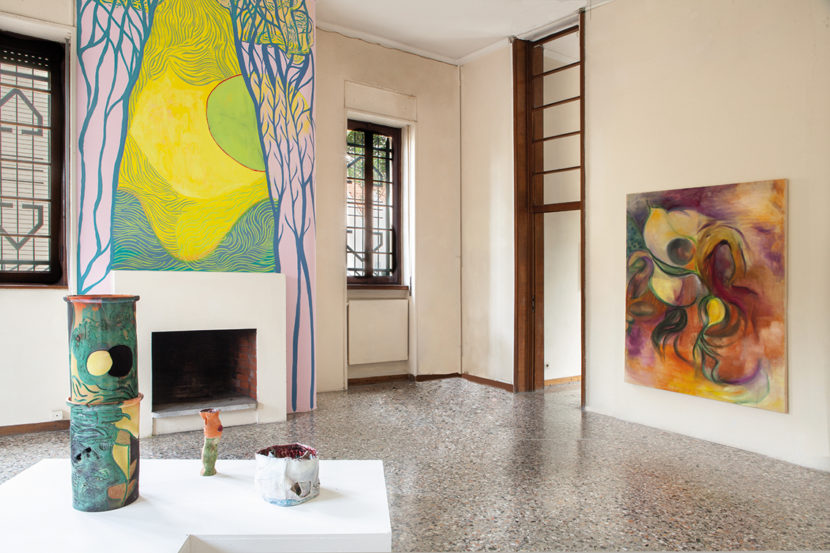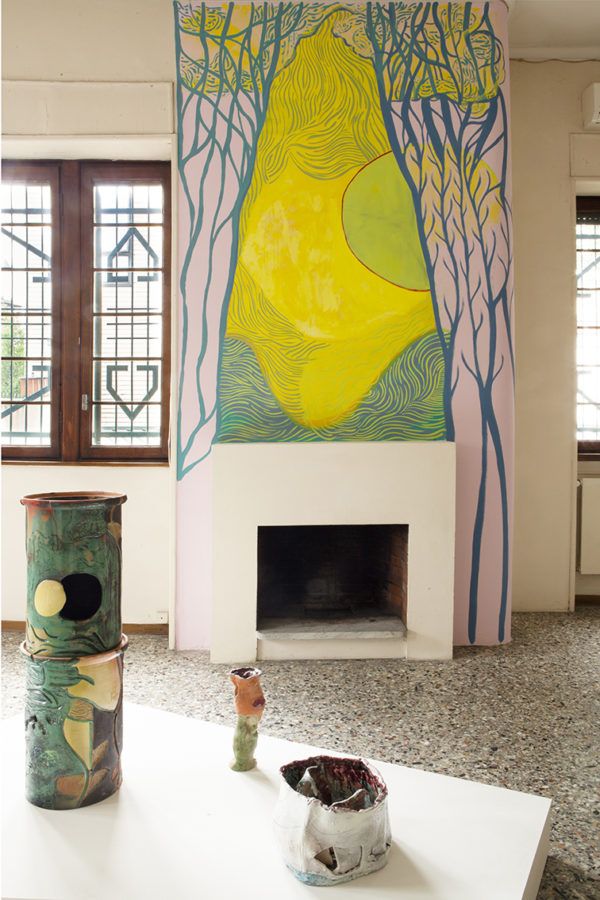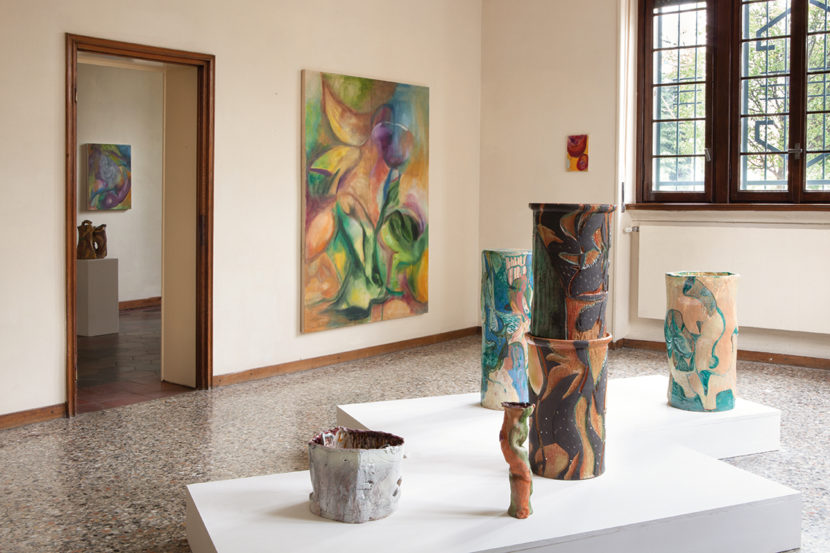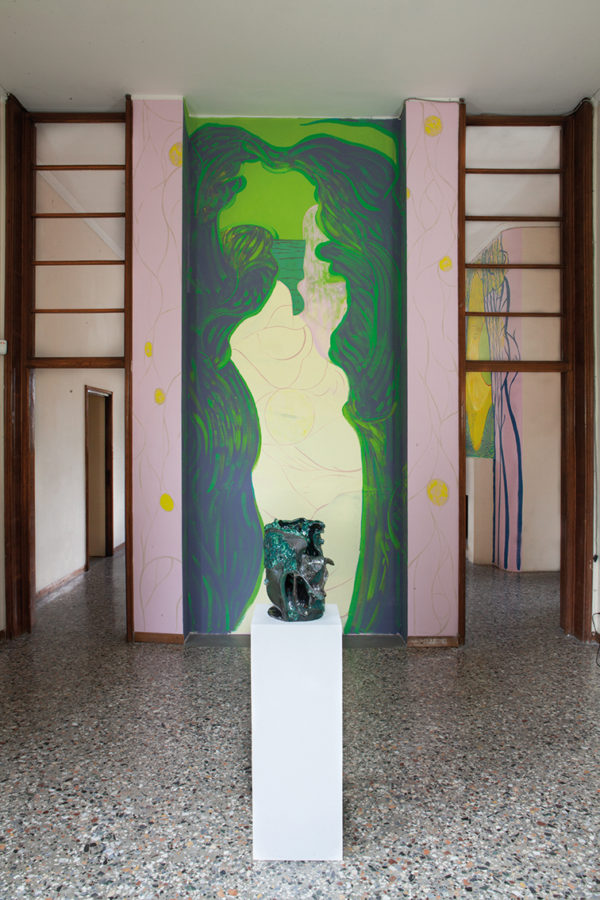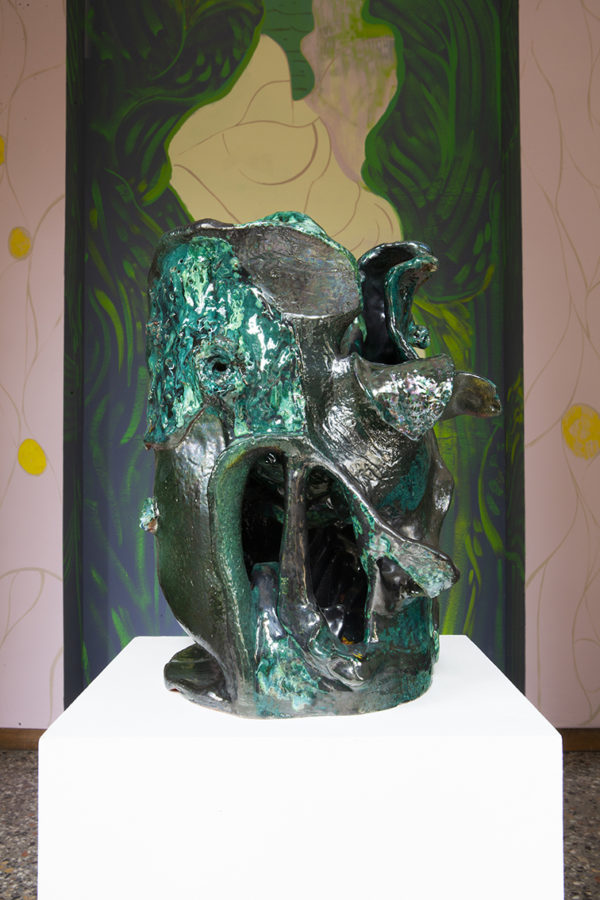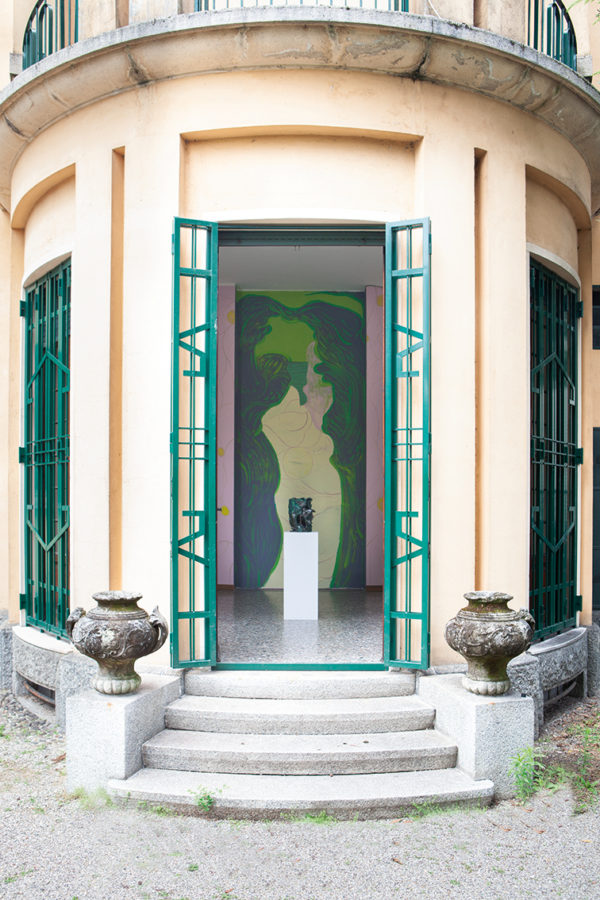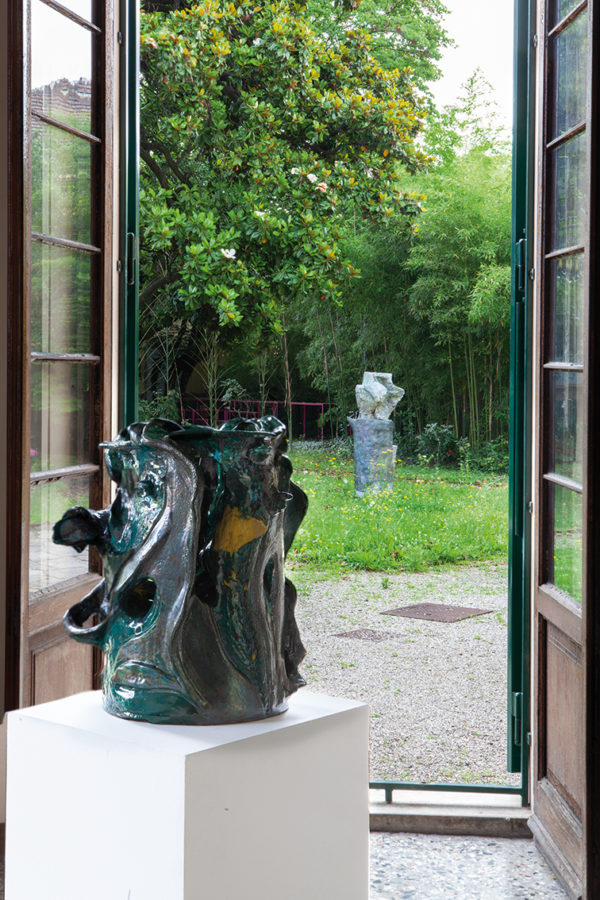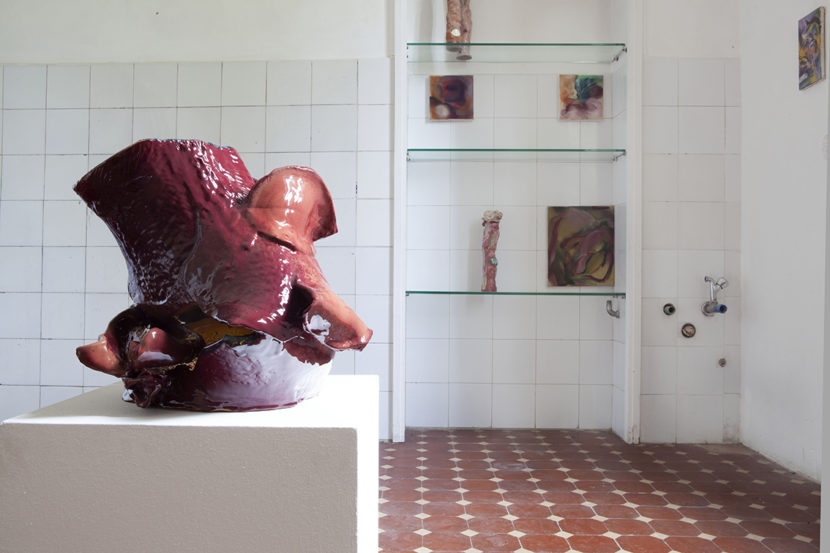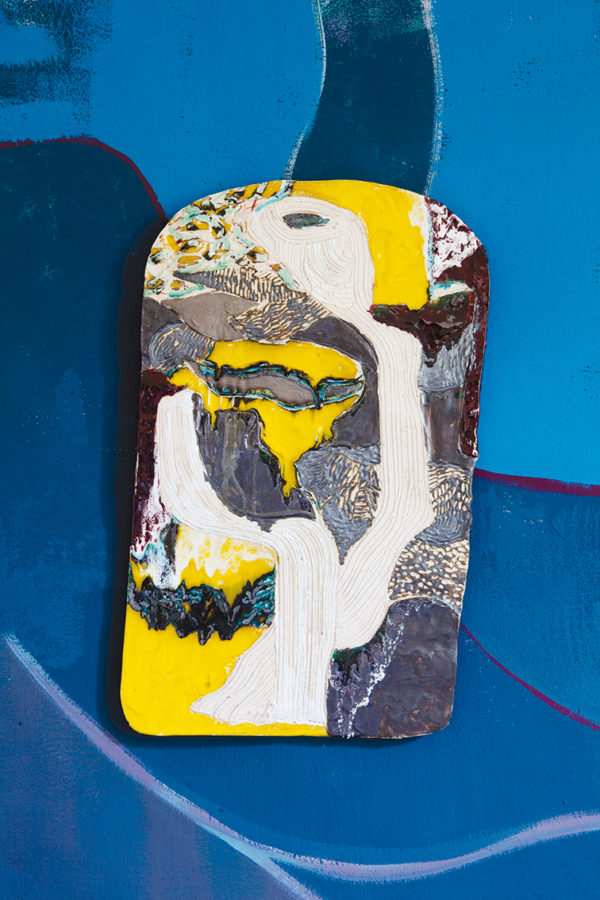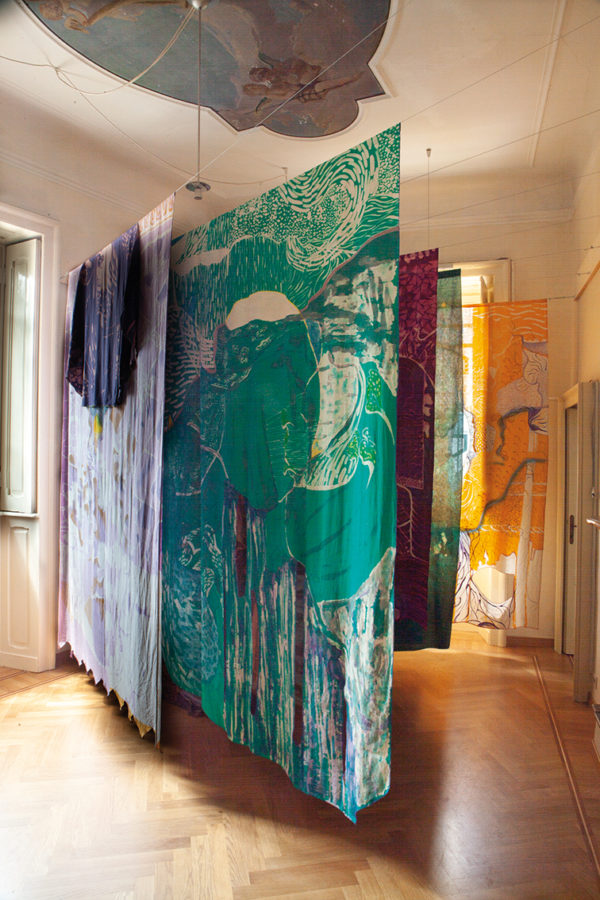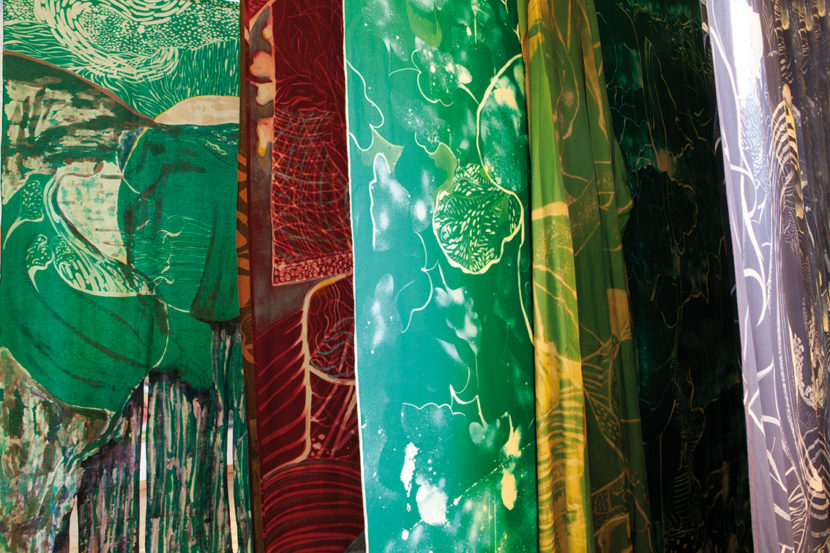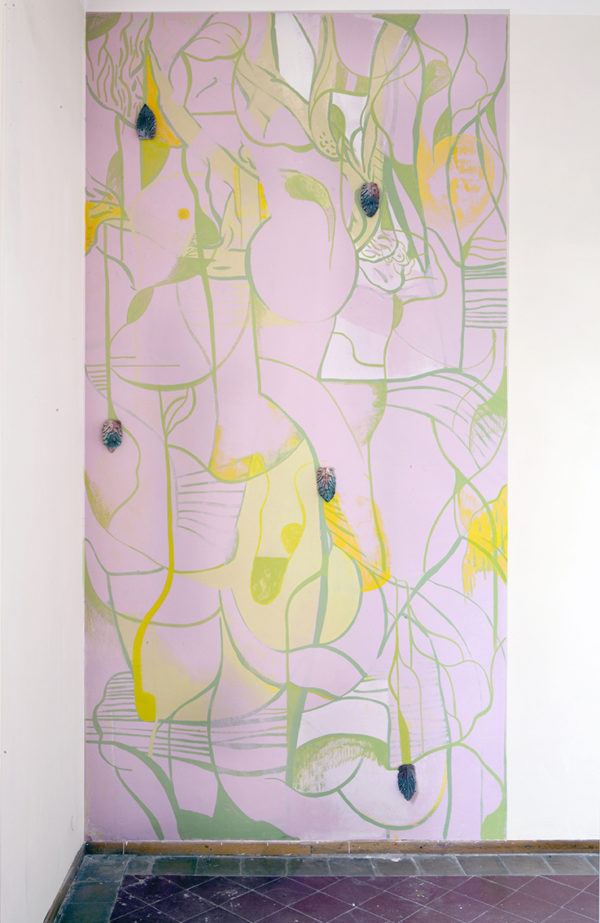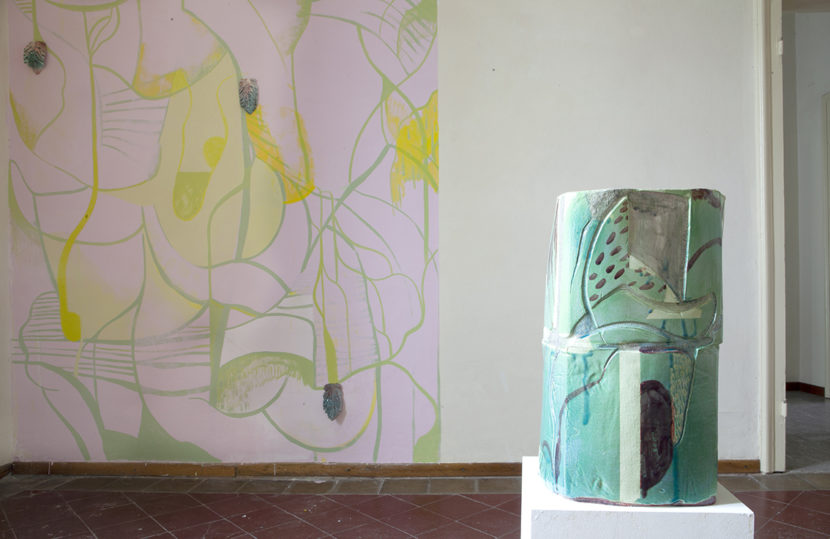Chang’e-4
Casa Testori Novate Milanese, Milano
20 giugno – 13 settembre 2020
Eemyun Kang (quadri) e Alessandro Roma (sculture, murales e tessuti)
a cura di Irene Biolchini
Nel gennaio 2019 la missione Chang’e-4 dava la notizia della prima foglia di cotone germogliata sulla luna. Le immagini scattate ritraggono una natura verdissima, solitaria, in mezzo all’oscurità dominante. La foglia prende vita nell’intimità di uno spazio confinato – il contenitore appoggiato al suolo lunare – in pieno contrasto con lo Spazio infinito che la circonda. Una foglia-lingua stesa al suolo, effimera, perché la notte lunare e le sue temperature incompatibili con la vita, la uccideranno dopo un solo giorno. Da anni la ricerca di Alessandro Roma ed Eemyun Kang si muove su questo crinale: nella riproduzione di una natura che non è solo quella esteriore, ma che è rifugio incerto, messa in discussione delle certezze.
In questa mostra, il dialogo cerca di confondere le loro voci il più possibile, tentando di far vivere allo spettatore un’immersione dove non sempre è possibile distinguere le mani dei due artisti. In entrambi, l’attrazione della pittura gioca un ruolo fondamentale e ci rivela l’intesa profonda che lega il loro lavoro. Alessandro Roma si confronta con lo spazio della casa presentando sculture in ceramica, murales e tessuti. Nel caso delle opere presentate da Eemyun Kang, coreana da diversi anni residente a Milano, ci troviamo davanti ad un gruppo di grandi tele pensate appositamente per la mostra.
La pittura lingua viva è una battaglia per cui Giovanni Testori si è speso fin dagli anni Settanta e Casa Testori era il luogo più indicato per questo canto di gioia della pittura, nonché per una riflessione sull’eternità di questo mezzo artistico.
“Una richiesta ancora più urgente nel tempo sospeso della pandemia in cui abbiamo immaginato questa mostra. Un momento in cui il sopraggiungere di spazi virtuali e tour digitali ci ricordava, ogni giorno, l’esigenza di ritornare all’opera, alla sua materia, alla sua «testimonianza». Ma anche il bisogno di ritornare al silenzio dello studio, della lettura. Perché Chang’e-4 possa non essere solo la sigla di una missione spaziale, ma anche un augurio di cambiamento delle pratiche, di una collaborazione e di un ascolto” sottolinea la curatrice.
EG
Chang’e-4
House Museum Testrori, Milan
20 giugno – 13 settembre 2020
Eemyun Kang (paintings) e Alessandro Roma (sculptures, wallpaintings e fabrics)
curated by Irene Biolchini
On January 2019 the space mission Chang’e-4 reported about the first cotton leaf bloomed on the moon. The pictures portrait an extremely green, lonely nature in the middle of darkness. The leaf grows in the intimacy of a defined space – the box on the moon soil – contrasts with the infinity of the space around it. A leaf-tongue laying on the soil, ephemeral, because the moon night and its life incompatible temperatures, will kill it in one day only. For years the research of Alessandro Roma and Eemyun Kang moves along this path: in reproducing a nature which is not only the exterior, but is an unsafe refugee, with just few certainties.
In the show, the dialogue is trying to confuse their voices as much as possible, trying to make the spectator to live an immersive experience where is hard to distinguish the hand of the two artists. For both of them the attraction for painting plays a key role and reveals the deep intent that links their artistic production. Alessandro Roma faces the house spaces by presenting ceramic sculptures, wall paintings and fabrics. In the case of the art pieces presented by Eemyun Kang, Korean that has been living in Milan for many years, we find a group of large canvas created right for the show.
Living language painting is a mission that Giovanni Testori brought on since the seventies and Casa Testori was the most suitable place for this joyful expression of painting, as well as for a reflection on the eternity of this artistic medium.
“An even more urgent request in the suspended time of the pandemic in which we imagined this exhibition. A moment in which the arrival of virtual spaces and digital tours reminded us, every day, of the need to return to the artwork, to its material, to its “testimony”. But also the need to return to the silence of study, of reading. Because Chang’e-4 can not only be the acronym for a space mission, but also a wish for changes in practices, collaboration and listening ” underlines the curator.

